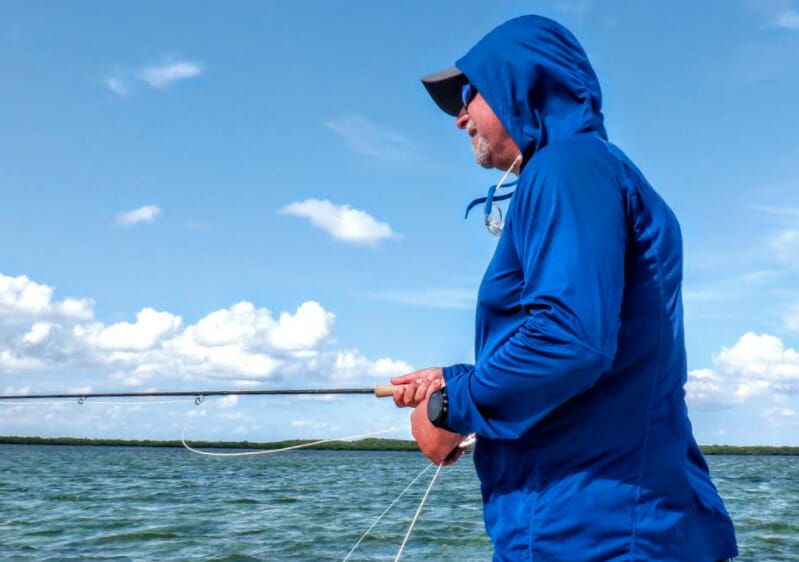Earl Harper prepares to cast to permit on the Berry Islands. Chris Hunt photo.
I have the good fortune this week to among the first guests at the new Soul Fly Lodge on the Berry Islands in the Bahamas. Here’s a bold prediction: in the next five years, this place will be known as the permit destination of the northern Caribbean.
Bold words? Well… you didn’t see what I saw over the weekend. But that’s a tale for another day.
What I also saw over the weekend was the need to make a 50-foot fly cast dead into a 30 mph wind–no easy task for a trout angler who dabbles in the salt now and then.
Thankfully, the lodge has hired one of the best guides in the Bahamas to help get the new program off the ground — Travis Sands. With some coaching and quite a bit of practice, both photographer Earl Harper and I were making that cast. Here’s how:
First things first. When casters who don’t spend a lot of time on the salt are faced with a stiff, in-your-face wind, often, the first thing we do is try to power through it with big, sweeping archs and lots of arm and shoulder. We work really hard, and for naught. As Travis coached us, a cast into the wind isn’t any different than a normal cast save for one important factor: economy.
Instead of opening up our stances and heaving line into the wind (which only serves to open up our loops and give the wind a better chance to sweep our fly lines off into the emerald green water of the flats) it pays to contract. Bring the shoulder down. Tighten the loop. Imagine a “slice” rather than a “punch,” and your line will start to behave as it might normally.
Yes … this is a lesson I have to relearn almost every time I come to the flats to chase bones and permit. But the lesson is getting easier. Maybe one day, I can skip remedial wind casting and just start putting flies in front of fish.
And here, where the permit population might be among the densest I’ve seen anywhere, skipping a grade at casting school can lead to hookups with one of the most difficult flats fish anglers can catch.



